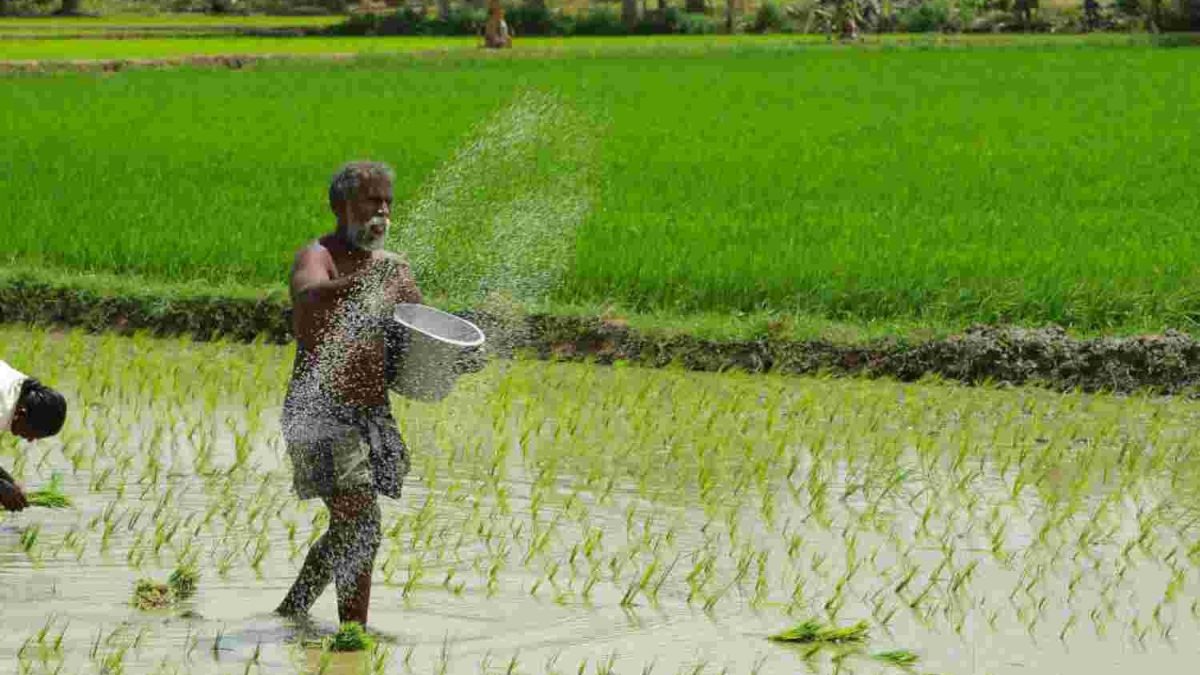India Unveils World’s First Genome-Edited Rice Varieties, Promising Higher Yields and Faster Maturity

ISRO Estimates Wheat Production at 122.7 million tonnes Using Satellite Data
April 21, 2025
India to Host World’s Largest Rice Event: Bharat International Rice Conference 2025
September 21, 2025The new rice strains could increase per hectare yields by up to 30% and mature 15 to 20 days earlier than existing varieties
New Delhi, 07 May 2025 | Nirmesh Singh:
As India prepares for the upcoming Kharif paddy cultivation season next month—marked by field preparation, transplanting of rice seedlings, and ensuring effective irrigation and crop management—the nation has achieved a significant milestone in agricultural innovation. On Sunday earlier this week, India became the first country in the world to officially release two genome-edited rice varieties, marking a landmark breakthrough for Indian agriculture. This pioneering move is expected to enhance paddy productivity while bolstering the crop’s resilience to climate change, setting a new benchmark for sustainable food security.
 Unveiling the varieties, Kamala-DRR Dhan-100 and Pusa DST Rice 1, Union Agriculture Minister Shivraj Singh Chouhan said the new rice strains could increase per hectare yields by up to 30% and mature 15 to 20 days earlier than existing varieties. He also highlighted their environmental benefits, noting that the varieties require less water and contribute to lower greenhouse gas emissions.
Unveiling the varieties, Kamala-DRR Dhan-100 and Pusa DST Rice 1, Union Agriculture Minister Shivraj Singh Chouhan said the new rice strains could increase per hectare yields by up to 30% and mature 15 to 20 days earlier than existing varieties. He also highlighted their environmental benefits, noting that the varieties require less water and contribute to lower greenhouse gas emissions.
“It is an important day for us. Soon, these two new rice varieties will be made available to farmers,” Chouhan said at the launch event.
The genome-edited rice strains have been developed by enhancing two of India’s most popular rice varieties — Samba Mahsuri (BPT5204) and MTU1010 (Cottondora Sannalu) — to improve their stress tolerance, yield potential, and climate adaptability, while retaining their core agronomic traits. Both new varieties are reported to possess superior drought tolerance and high nitrogen-use efficiency.
While it may take four to five years for these varieties to reach farmers through the standard seed production process, the government is working to expedite their availability. They have been recommended for cultivation across key rice-growing states, including Andhra Pradesh, Telangana, Tamil Nadu, Karnataka, Kerala, Maharashtra, Madhya Pradesh, Chhattisgarh, Odisha, Jharkhand, Bihar, and West Bengal, among others.
A key distinction was also made between genetically modified (GM) crops and gene-edited crops: the latter do not contain any foreign genes. This makes gene editing a more precise and potentially more acceptable tool for agricultural innovation.
India allocated ₹500 crore for genome editing in agricultural crops in the 2023–24 Union Budget, signalling strong policy support for research in this emerging field. According to Indian Council of Agricultural Research (ICAR) Director General Mangi Lal Jat, gene editing is underway in nearly 24 food crops and 15 horticulture crops, many of which are expected to be released in the coming years.
Although genome-edited rice has been explored in countries like China and Japan, India is the first to officially release such varieties for cultivation — marking a new chapter in sustainable and science-led agriculture.
__________________________________________________________________________


